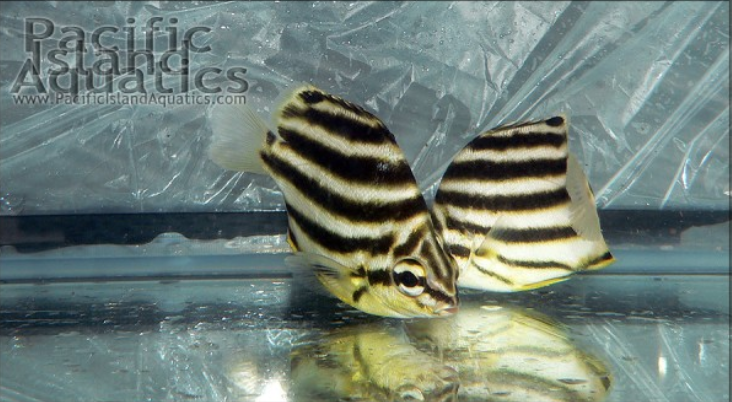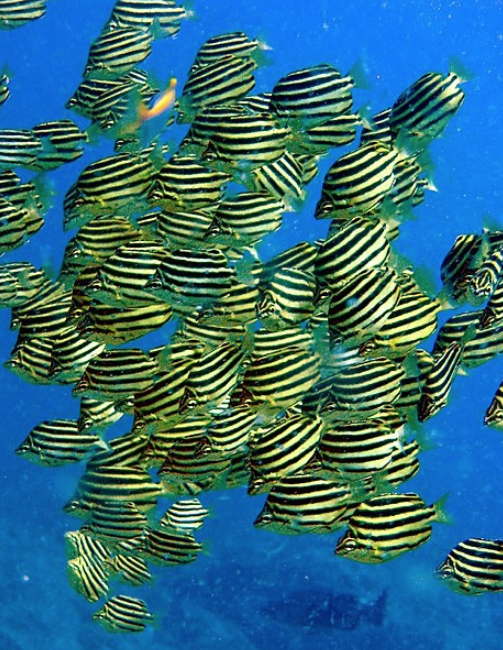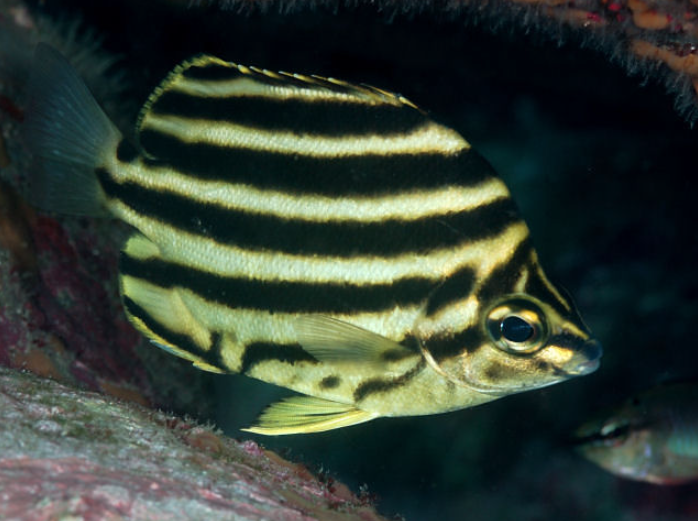Reef Builders has received a report that the “Australian Stripey”, Microcanthus strigatus, has been successfully bred in captivity. Public aquarium professional Steve Bitter shared the news via social media that his friend Jonathan Foster at Fisheye Aquaculture had bred them after Bitter mentioned their potential suitability to him four years ago.
Also known as the Northern Stripey, Microcanthus strigatus occurs in subtropical waters off Japan, Hawaii, and China seas, while its congeners M.joyceae and M.vittatus occur off Eastern and Western Australia respectively (Kuiter). Originally assigned to the butterflyfish genus Chaetodon by Cuvier in 1831, these butterflyfish-looking fish are in fact Basses, belonging to their only family Microcanthidae, but within the order Centrachiformes, which include sweeps, and perches. If Foster’s fish came from Australia, they are more likely to be joyceae or vittatus, but all look similar and can be kept in the same way.

Apitasia eaters
Stripeys appeal to aquarists firstly because of their striking patterns, but secondly, because some Australian reefers use them to control Aiptasia. The good news is, they do eat Aiptasia, and our friends at Gallery Aquatica down under have proved that. But just like Copperband butterflies and Aiptasia eating filefish, any fish which is capable of eating Aiptasia may also prey on coral polyps and there are other, separate reports of them picking on corals.
The other barrier with some Stripeys is that these fish are subtropical (according to Rudie Kuiter,) with 20C/68F being their preferred natural temperature. But again, the few fish that we’ve seen in tropical marine aquariums have all been ok. Temperature may be species specific, and They can withstand a range of salinity too.

Taxonomy
Taxonomists Anthony C.Gill and our very own Kai The Fish Guy, Yi-Kai Tea, reappraised the Microcanthus Genus in 2020 redescribing and resurrecting Microcanthus joyceae, with Fishbase now recognizing six valid species in the genus versus Rudie H. Kuiter’s earlier account of them, detailing three species in his 2002 book Butterflyfishes, Bannerfishes and their relatives. For up-to-date information on Microcanthus and the species within it, go to https://www.mapress.com/zt/article/view/zootaxa.4802.1.3
This is the second successful captive breeding of a saltwater aquarium fish species that we’ve written about this week, so there has never been a better time to keep both sexes of any fish together (wherever possible,) for a chance of collecting and rearing their spawn and helping to make history.
Image attributions Izuzuki, CC BY 3.0 https://creativecommons.org/licenses/by/3.0, via Wikimedia Commons and Richard Ling, CC BY-SA 2.0 https://creativecommons.org/licenses/by-sa/2.0, via Wikimedia Commons



